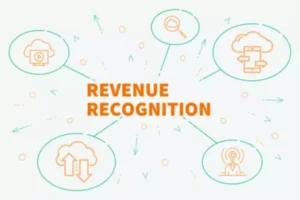Definition
Opportunity cost is the cost of production of a good or service, measured in terms of a lost (missed) opportunity to produce another type of good or service that requires the same resources. It is the lost profit as a result of choosing one of the options. At the same time, the best of the missed options is considered the opportunity cost.
It can also be considered as the cost of replacing one good with another. If, when choosing from two possible goods and their sources, the consumer (buyer) prefers one, sacrificing the other, then the second good is the opportunity cost of the first. So the opportunity cost of the good is the cost of loss, which the consumer is willing to go to in order to get the opportunity to acquire the desired good.
For example, you decide to rent an office space in the center of a prestigious district for $3,000 a month. Thus, you exclude alternative options, including renting a more modest place for $1,700 a month. Given that the alternatives were cheaper, the cost of the option you did not choose will be the opportunity cost.
We can say that the opportunity cost of certain goods is the cost expression of the loss that the person or business is willing to incur in order to acquire the goods they need. In production, it can be defined as the amount of another good that needs to be sacrificed. In other words, how much a business would need to reduce the production of one good to increase the production of the other good.
The opportunity cost can be expressed both in goods, consumption or production of which had to be abandoned, and in the monetary equivalent of these alternatives. The opportunity cost can also be expressed in terms of time (lost in terms of its alternative use). Although it is a very valuable indicator that can be used as a guide by when making decisions, the opportunity cost is not something you will see in bookkeeping records.
Usage
This is one of the basic concepts in economics. Opportunity cost in monetary terms is used to analyze the performance of companies. With its help, you can decide which option is better and track how efficiently the company is performing or how profitable the investing option is in comparison with other options. The concept of opportunity cost is most often applied:
- When assessing production capabilities. What can be produced on a particular piece of equipment with a limited amount of resources?
- When assessing expansion opportunities. What can be gained from installing new equipment and how this money can be used in a different scenario.
- When assessing investment options. What will happen if you invest money in certain securities, and what income the alternative investment portfolio will give.
Opportunity cost can be easily applied in practice in real life. Let’s explain how it works. You have two options for how you can spend your evening. Play video games with your friends, have fun and relax, or just finish a project that you need to present at work. With the first option, you will get physical and emotional relaxation and a project postponed for tomorrow. In the second case: stress, unhealthy sleep, but a completed project. It turns out that the opportunity cost of the completed project is healthy sleep and rest.
This comparison can be applied everywhere. Whenever you have a choice of two options that lead to consequences, you need to carefully weigh what you can lose and how much benefit your choice will bring. Thus, opportunity cost is the missed opportunity of each particular choice. It can be used to analyze the economic performance of a company and even a country. It is even more important to apply it to your own choices – what you miss out on when you choose one way and not the other way.
Calculation
Example 1
The opportunity cost is calculated in terms of how much of one good we have to give up in order to make some amount of the other good. For example, Jack has $1,000 that he can use to buy fabric and sew 400 shirts or he can purchase another fabric and make 100 backpacks. What is the opportunity cost of making shirts? Jack’s opportunity cost of producing 400 shirts is 100 backpacks.
It is great that we can get these numbers and know the opportunity cost in terms of goods. However, sometimes, this is not good enough and we just want to know the opportunity cost of one unit (e.g. opportunity cost of producing 1 shirt). How would you calculate it?
To get 400 into 1 you would simply divide it by 400. In order to preserve the ratio, you would also need to divide 100 by 400. This would give us ¼ or 0.25 backpacks. Accordingly, the opportunity cost of 1 shirt is 0.25 backpacks. If we know the price we can sell them for, then we can express this opportunity cost in monetary terms, which in the business world often makes more sense.
Example 2
As was mentioned earlier, opportunity cost can be sued for weighing any type of options in the decision-making process. A computer programmer needs to paint his house. To do this, he can hire a professional painter who will paint the house in 15 working hours and asks $1,500 for work.
His friends suggest painting the house himself. Their reasoning behind this is that the programming guy was a good painter back in his college days. It will take him 20 hours to paint the house and will cost no money. The programmer is overwhelmed with work and usually earns $100 an hour. Therefore, he refuses to paint the house himself, saying that it is going to cost him more than hiring a professional.
Who is right and why? What is the opportunity cost of painting the house on his own? The programmer will have to sacrifice 20 hours of his time during which he could possibly earn $2,000 (20 hours x $100/hour). When comparing the $2,000 he would be giving up by painting the house by himself and $1,500 when letting the other person do it, it is obvious which option is the best option in this case.


















